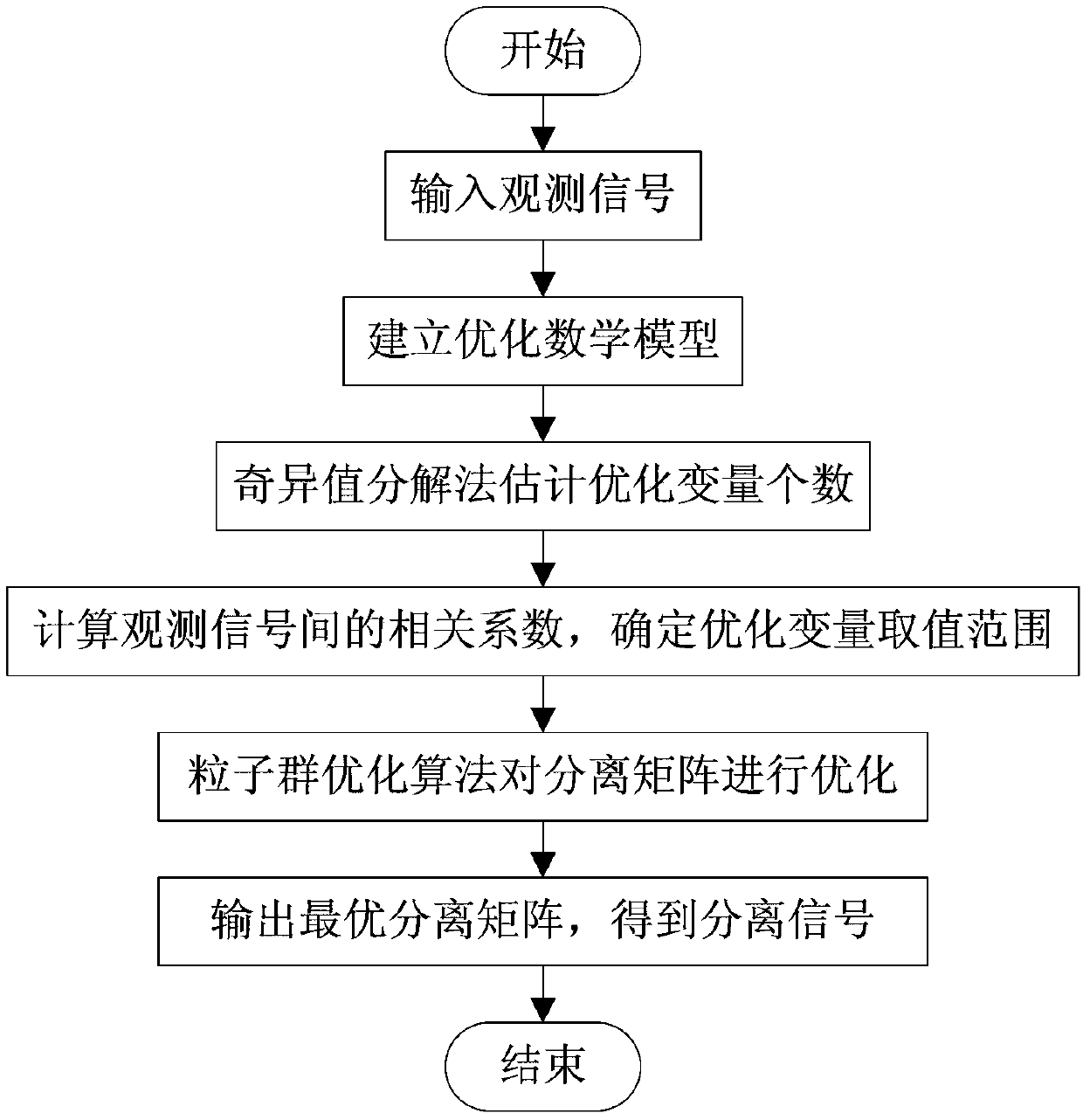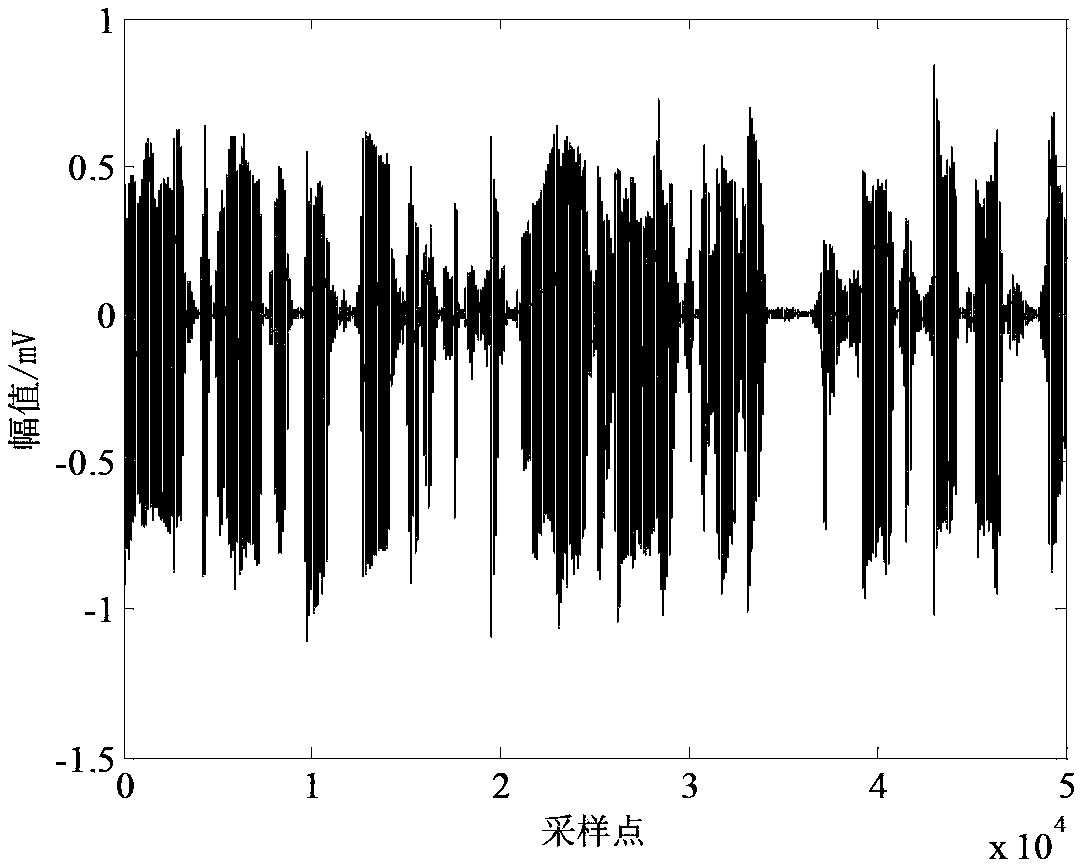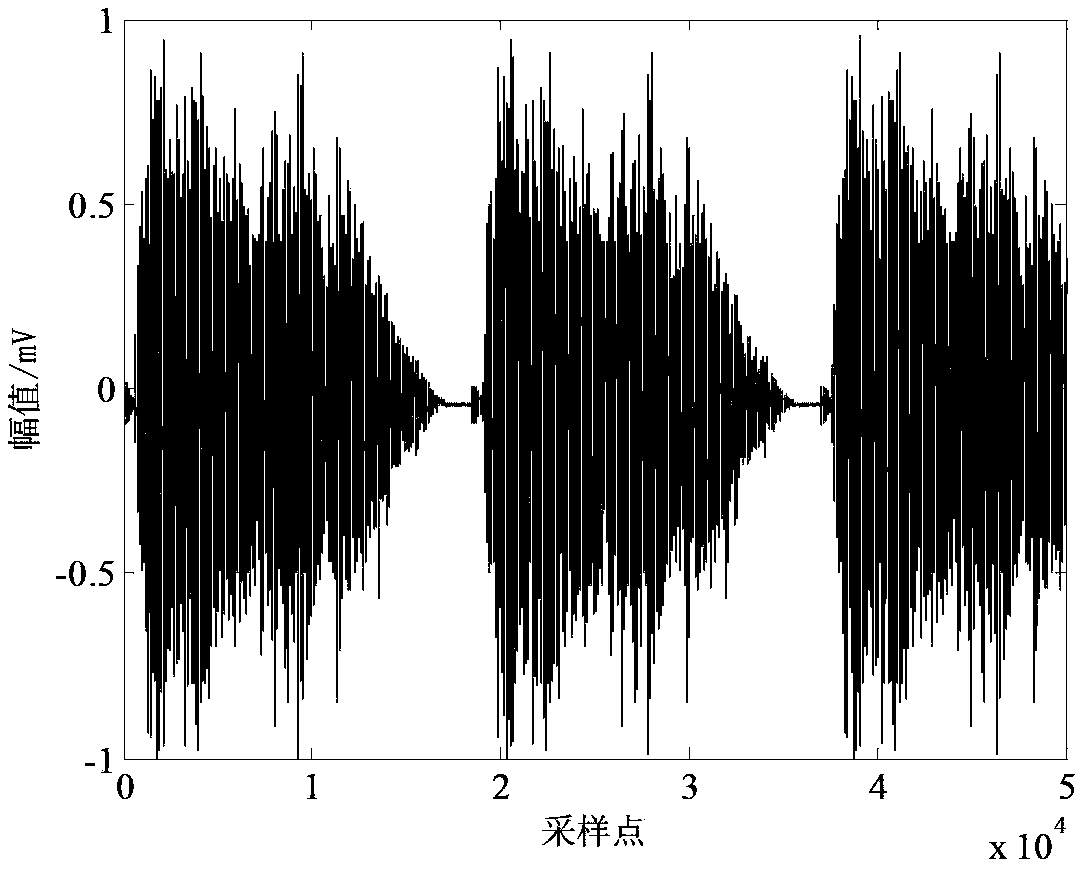Signal separation method based on particle swarm optimization
A particle swarm optimization and signal separation technology, which is applied in the field of signal processing and can solve problems such as inability to achieve accurate separation, detail deviation, and failure.
- Summary
- Abstract
- Description
- Claims
- Application Information
AI Technical Summary
Problems solved by technology
Method used
Image
Examples
Embodiment Construction
[0054] The present invention will be described in further detail below in conjunction with the accompanying drawings:
[0055] Reference figure 1 The specific implementation process of the present invention is as follows:
[0056] Step 1. Input the observation signal.
[0057] Step 2. To minimize the difference between the joint probability of the separated signal and the simple product of the edge probability as the optimization objective, establish the independent component analysis algorithm optimization model shown below to find the optimal separation matrix:
[0058] Minimize | P ( y 1 , y 2 · · · , y m ) - Π i = 1 m P ( y i ) | w . r . t . W
[0059] s.t.:y(t)=Wx(t)
[0060] Among them: x(t) is the n-dimensional observation signal, y(t) is the m-dimensional separation signal, W is the separation matrix, P(y 1 ,y 2 ,···,Y m ) Is the separated signal y 1 ,y 2 ,···,Y m The joint probability of P...
PUM
 Login to View More
Login to View More Abstract
Description
Claims
Application Information
 Login to View More
Login to View More - R&D
- Intellectual Property
- Life Sciences
- Materials
- Tech Scout
- Unparalleled Data Quality
- Higher Quality Content
- 60% Fewer Hallucinations
Browse by: Latest US Patents, China's latest patents, Technical Efficacy Thesaurus, Application Domain, Technology Topic, Popular Technical Reports.
© 2025 PatSnap. All rights reserved.Legal|Privacy policy|Modern Slavery Act Transparency Statement|Sitemap|About US| Contact US: help@patsnap.com



